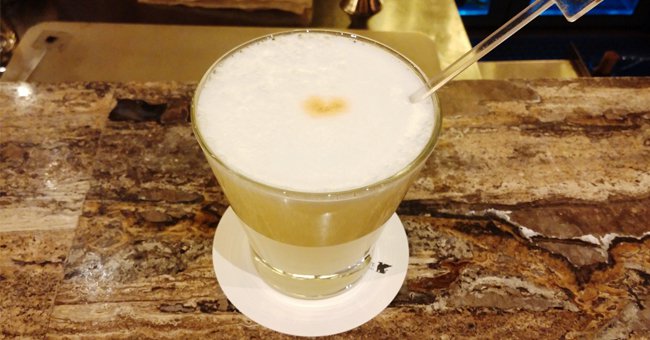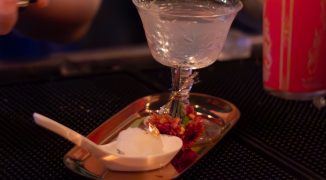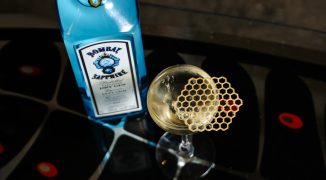Peruvian pisco has limitless possibilities and flavor profiles. It can be made from eight different grapes, including aromatic and non-aromatic varietals, and can either be a single varietal puro, or a blended acholado. Mosto verde pisco is distilled from sweet wine which hasn’t finished fermentation, and can itself be made into either puros or acholados.
The broad range found in pisco matches the country’s own diversity. Peru is a country 30 million strong which manages to include arid deserts, 1,500 miles of coastline, Amazonian jungle, and a densely populated capital city in Lima. As one could imagine, cultural norms and drinking habits inevitably differ.
“I can tell you there is a difference in drinking culture between Ica and Lima,” says Melanie Asher, founder of Macchu Pisco. “In Ica, the cradle of pisco, people prefer drinking their pisco neat.”
Indeed, a visit to the moderately scaled, traditional Lovera distillery in Ica offers such an example. A group of locals were more than willing to oblige, upon the request of Pisco Portón distiller Johnny Schuler, a demonstration of their preferred drinking methodology. One person pours himself a shot and passes the bottle to his friend. As the group chats, he takes his time sipping and enjoying the pisco. When finished, he passes the glass, and the cycle continues. They’re not taking shots, but rather leisurely sipping it neat.
At Lovera, locals can also walk into the distillery and buy a big jug of Mistella for just a few dollars, which includes unfermented grape juice mixed with pisco. Similar drinks are made across the globe with different regional spirits. Here, the sweetness of the high-sugar pisco grapes cuts through the earthy pisco spirit itself, creating a concoction locals simply call the quita calzon, which loosely translates to “the panty remover.”
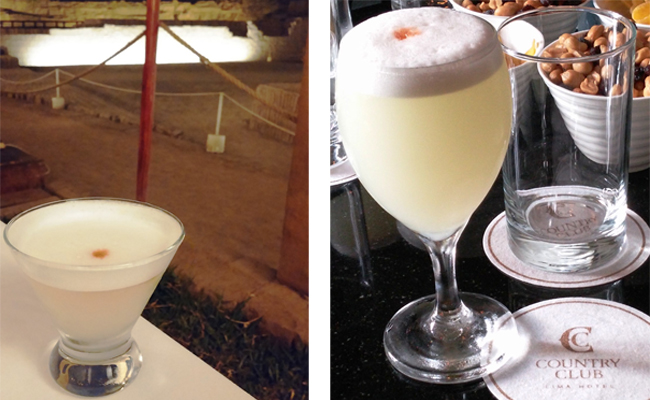 Pisco sours at Huaca Pucllana and the English Bar at the Country Club Lima Hotel.
Pisco sours at Huaca Pucllana and the English Bar at the Country Club Lima Hotel.
Another Peruvian staple is the macerado, which infuses pisco with seasonal fruits, herbs and spices. These can be sweet, savory, spicy, or anything in between and can be found at nearly any bar or restaurant, as well as in the majority of Peruvian homes. In Cusco, you may find a Coca leaf macerado, as coca leaves are used to help combat elevation sickness there, whereas sweet flavors could be strawberry, coconut or passion fruit. Other choices may include ginger or chili, and truly, dozens of others.
Lima, which includes nearly a third of the country’s population, sticks more to cocktails. “In Lima, the Pisco Sour still reigns but increasing in popularity is the Chilcano, which is much easier to make,” says Asher. “And folks can drink more than one which is usually the case with Pisco Sours.”
Pisco Sours can be a bit much to handle after a round or two, but the Chilcano, with ginger ale, lime juice and pisco, is an easy drinking go-to throughout the evening. Still, mastering the Pisco Sour is the definitive jumping point for understanding Peruvian drinking culture, and its native spirit, pisco.
Most prefer using a Quebranta pisco, and more than 80 percent of pisco is made solely with, or includes, the Quebranta grape. Others prefer the more aromatic note provided by a Torontel or Italia.
Each of pisco’s eight grapes, four aromatic, four non-aromatic, provide a different starting point. From earthy to spicy, sweet to floral, herbal to nutty, the range is limitless, which makes for a versatile cocktail spirit. So, you may need to taste a few samples before settling on your favorite.
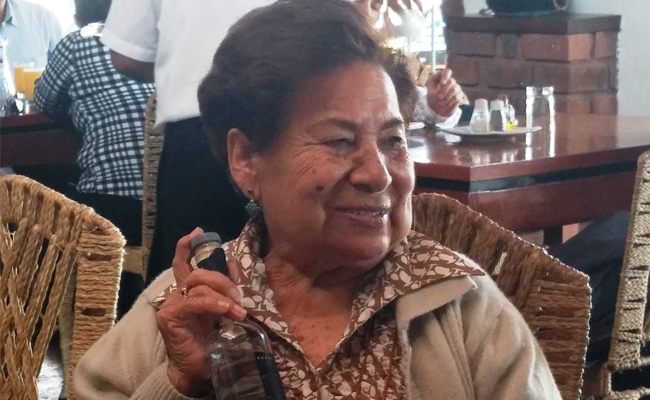 Juanita Gonzalez, known as the godmother of pisco, has been making Tres Generaciones pisco for more than 60 years.
Juanita Gonzalez, known as the godmother of pisco, has been making Tres Generaciones pisco for more than 60 years.
Juanita Gonzalez, who has been making Tres Generaciones pisco for more than 60 years, offers a reminder on an essential point. “You have to know how to drink,” she said, referring to the innate knowledge required for making good pisco, while the point also applies to making a good pisco drink.
Learning to understand the finer flavor points of different varietals and blends will open up a limitless realm of possibilities. A good way to get acquainted with the pisco’s different profiles is to do a taste test utilizing the official tulip-shaped pisco snifter. Portón’s Schuler actually designed the glass some 15 years ago, going on to then help further refine Riedel’s model more recently.
Make the Perfect Pisco Sour At Home or At The Bar
Once you know the pisco you want to work with, the standard Pisco Sour recipe is simple:
- 3 ounces pisco
- 1 ounce fresh squeezed lime juice
- 1 ounce simple syrup
- 1 egg white
- Amargo Chuncho bitters
Directions:
Fill a shaker with ice. Add the first four ingredients and shake vigorously for 20 to 25 seconds. Pour into a cold glass, and top with a few dashes of bitters.
The keys to the perfect Pisco Sour include first, a hefty 3-ounce dose of pisco, and second, regulating the foam so it’s not excessive. The foamy layer should be approximately half an inch in thickness.
“If I wanted a meringue, I would have ordered dessert,” joked Schuler, as he lamented the tragedy of an overly foamy Pisco Sour placed before him. Alvaro Escobar, who taught the author how to make the above recipe from the Qespi Bar in the JW Marriott in Cusco, and is one who prefers an aromatic Torontel as the base of his Pisco Sour, agrees. “You don’t want to be cheated out of a drink by having half foam,” he said.
Andy Valderrama, a Pisco Portón brand ambassador based in Lima, shared his own specialty for crafting the perfect Pisco Sour. “My personal touch is breaking the bubbles of the foam with a spray of pisco infused with some citrus peels,” he offers, which reduces that foam layer a bit while adding an extra citrus note atop of the drink.
Making a batch of Pisco Sours in the blender is perfectly acceptable, and widely practiced in Peru. In this case though, Escobar advises using only half an egg white per drink, to minimize the foam overkill.
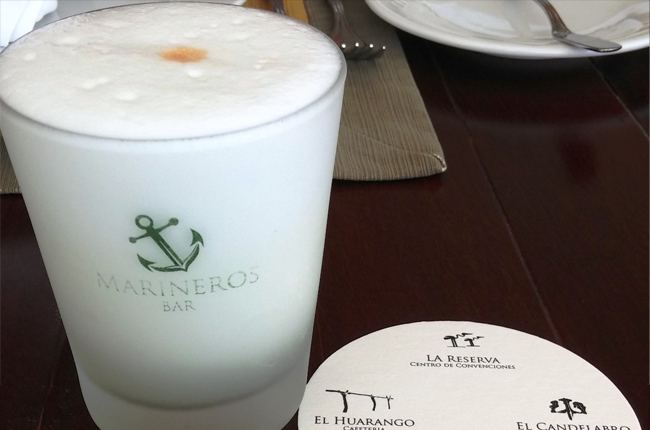 The pisco sour at Marineros Bar.
The pisco sour at Marineros Bar.


